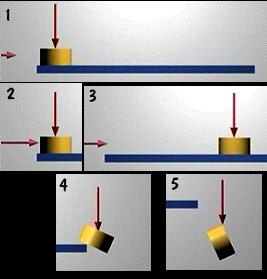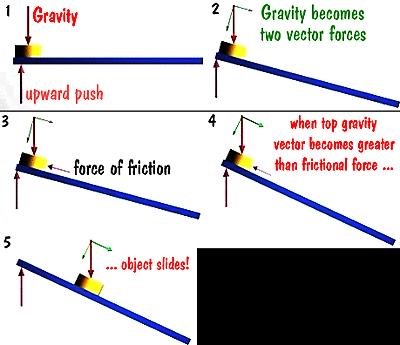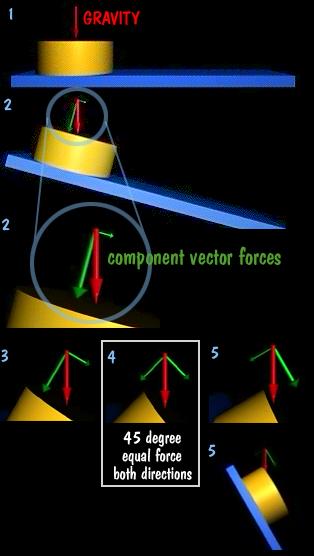Mass wasting does not rely on a carrier material like water, ice or wind. It is due to the force of gravity on an object at rest.
An object at rest stays at rest unless acted upon by a force. Once it is acted upon it will stay in motion until some equal and opposite force stops it.
When an object is placed on a flat surface, the only force acting on it is gravity. As the ground plane is inclined, the force of gravity can be shown to act in two directions. The force which keeps the object from moving is friction. Friction acts like a force opposing any movement.
As the incline increases the force parallel (book calls it tangential) with the surface grows and eventually becomes greater then the frictional force. This force is called the sheer stress. When this happens the object begins to move.
The perpendicular force component acts to keep the body in place. This force decreases as the slope increases. Another force that aids in keeping the body in place is called sheer strength. As long as the sheer strength remains higher than the sheer stress the body will remain motionless.
 |
 |
| 1.) erosion 2.) earthquake |
Increase Stress |
| 1.) weathering 2.) saturated water ......(heavy rain) |
Decrease sheer strength |

Capillary Action
Water in small quantities can act like a gluing agent. Through a force called surface tension, water can form a temporary bond between surfaces. If to much water is added the bond is weakened and disappears, and the water then acts more like a lubricant.
When a slope saturated with water receives more water, the added pressure may cause a catastrophic failure.
| NEXT | TOC | PREV |